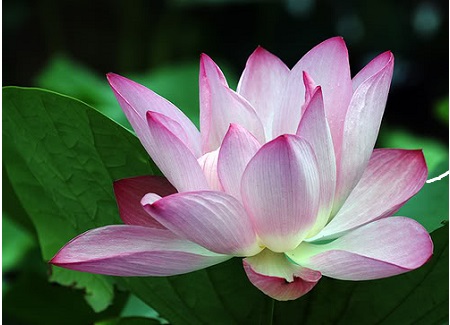
“Saumya Mantra Explanations” by Swami Veda Bharati
Saumya Mantra Explanations
सौम्या सौम्यतरा शेष सौम्येभ्यस्त्वतिसुन्दरी।
परापराणां परमा त्वमेव परमेश्वरी॥
saumyā saumyātarāśeṣā saumyebhyas tvati sundari,
parāparāṇāṁ paramā tvameva parameshvarī. tāre tuttāre ture svāhā
Om
saumyā saumyatarāśheṣhā
saumyebhyas tvati sundarī
parāparāṇāṁ paramā
tvameva parameśhvarī
tāre tuttāre ture svāhā
The purpose of this observance is to etablish and enhance the peacefulness in the hearts and minds of Gurudeva’s disciples and thereby to strengthen a bond of good heartedness among all beings…only for the pleasure of Gurudeva.
This mantra is addressed to the Divine Mother as Saumyā, Divine Mother as soothing, gentle, moonlike peacefulness. It is used as a special mantra for the cultivation of these aspects of personality. The mantra occurs in Caṇḍī, or Devī-mahātmya, (I.62 or 71, depending on the edition) an important text in the tantric part of our tradition.
This particular observance that I am requesting our Gurudeva’s discipleship to undertake for the next three year has the purpose of bringing about peacefulness within each mind, radiating first into the personal family, then into the entire Guru family AND then into the larger global family. The normal rule is that while such an observance is going on there should be no controversial or confrontational thought. Not even one thought, leave along a word or action on the part of those who are undertaking such an observance.
Even though we have declared a purpose for that observance, we do it without expectation. We do it simply as surrender to the divinity. It is ‘Guru Prityartham’, that is, ‘for the pleasure of the divine Guru spirit’, to invoke the Guru spirit’s grace. It is with this intent of self-purification that I have requested that all collectively undertake this observance.
I strongly recommend that you read about these special japa observances in SVB’s booklet titled “Special Mantras”.
If you are presently doing some special practice, (purashcharana), then for this period of three years, continue with that purashcharana and you may do only one mala of the Saumya mantra, or as many as you are capable of doing.
Although the mantras are done for their sound vibration, they may carry a translation. Then there may be translations within translations going down to thousands of depths. I will give you here the shallowest level of translation.
The first word “Saumya” is a feminine word referring to soma like, or lunar qualities and attributes. Saumya, she of the lunar aspect, moonlike, peaceful and kind. Saumyatara, even more lunar and peaceful than the moon itself. Here there is a linguistic little secret. There is a hidden ‘a’ in a shesha saumyebhyas… She is even more beautiful than all lunar like forces and peaceful entities combined in the entire universe. So, breaking down the first half for the verse word for word it reads, “saumya, saumyatara, ashesha, saumyebhyas, tu, ati, sundari.”
The next half of the verse is as follows: Paraparanam, parama. Parama, supreme one transcending. Paraparanam…all things of the transcendent realities and the realities of this shore as experience in the world. She who transcends even the transcendent forces a well as immanent forces. Tvam Eva, thou alone, Parameshvari, Oh supreme Lady. Tvam Eva Parameshvari, Thou are the supreme Lady. Thou alone art the supreme Lady who transcends all transcendent realities and immanent forces.
The ultimate goals of Indian psychology are purely spiritual ones. The highest is to leave the mind behind in the no-mind meditation state (amanaska yoga or asamprajnata). The immediately preceding step to that is the discrimination between buddhi and the spiritual self (viveka khyati). The latter is still a goal too high, too distant for most. Before we can begin to have even glimpses of these levels of reality, we need to learn to cultivate a sattvic mind.
A sattvic mind and its operations are described and listed in the Bhagavad Gita chapters 14,17 and18. The brief descriptions of the processes leading to a sattvic mind are delineated as bhava samshuddhi, purification of emotions, and chitta prasadana, making the mind a clear and pleasant place. The Bhagavad Gita calls these processes inculcating mental asceticism or manasa tapas. Silence, self-control, and purification of emotions are the attributes of mental asceticism as mentioned in chapter 17.16. Saumya is the quality whereby anyone looking at you receives moonlike soothing, cooling sentiment.
The tasks of making the mind clear and pleasant and of purifying the emotions are closely linked. A sattvic mind does not suffer from the adhis or mental ailments and afflictions such as anger, vengefulness or malice. One does not repress these traits but simply recognizes the natural sattvic urges of peace, contentment and acceptance and thereby makes the mind a stronger energy field. One who accomplishes this suffers less anguish and pain in daily life. One simply replaces the rajasic and tamasic with the sattvic.
In order to replace the contrived and merely habitual with the natural, to reduce the anguish and suffering, one seeks to discover the cause of all the mental burning (tapa). Patanjali says it is the rajas that heats and torments the mind. It is the sattva that suffers. There is no other tormentor or sufferer. When the rajas dominates, we become restless and anguished. When sattva dominates, the rajas energy and activity aids in sattva’s goals of purification.
In this, what is the role of tamas? Tamas is much maligned as dark, heavy, inert and altogether undesirable. In fact, a balance of sattva, rajas and tamas is what is required. In the food we eat, sattva is the pranic energy we derive, rajas is the cooking and spicing, and tamas is the bulk. The word tamas is to be translated as stasis. When stasis serves the purpose of sattva, it imparts stability. When sattva is subdued by tamas it becomes stagnation. This is a universal principle applicable to all sciences including the Indian system of psychology.
The task of purification of the emotions and making the mind pleasant thus primarily consists of creating a balance of sattva, rajas and tamas, in such a manner that sattva alone dominates and the other two serve their purpose.
Failure to achieve this balance of power among the three gunas subjects is due to the adhis, our six enemies: kama or unbridled desire and passion, krodha or anger, lobha or greed, moha or attachment and confusion, mada or uncontrolled excitation and matsarya or hatred and hostility.
There is another tool used for achieving the goal of self-purification. It is a lengthy process called self-examination, atma nirikshana.
In the process of self-examination one does not seek justification for one’s destructive acts, ‘Oh, anyone would have lost his temper in these circumstances’, ‘Oh, I was only trying to show somebody the right way’ – and so on. One stops making these excuses for oneself. To embark on a path to self-purification consider these steps:
Make a list of your weaknesses, your true enemies.
Realize that a weakness is a weakening of some strength. Identify the strength that is weakened in this weakness. Seek to restore that strength. For instance, intolerance is a weakening of tolerance. Build up your tolerance level.
Take one or two key weaknesses at a time. Build your resolve, sankalpa to conquer that enemy.
Be self-observant, mindful, practicing smrti upasthana, that is, attentiveness to your states of breath, body position, glance, voice, choice of words, acts. These indicate your state of mind and the extent to which you are subject to rajas and tamas, the despoilers of the mind. Keep a mental or written journal of your progress: today I lost to my enemy, today I won but not entirely. In this process, see how far you really are from the goal of enlightenment.
When you start this process you may wonder how to determine what is right. Ask yourself two questions: Is it sattvic? Is it anywhere close to the goal of cultivating the signs of enlightenment?
Only on that basis can you determine and choose the feelings, sentiments and emotions that you plant within. Cultivate them by developing the courage to reject the erstwhile habit of the mind and act in a new way, the way of the natural urges described previously.
The way of virtue is deep, dharmasya gahana gatih. Ask yourself, What is the alternative, sattvic way of behaviour? Instead of anger how should I have responded to the situation? Slowly these questions will become paramount in your mind. If they create conflict, your rajas is still dominant. A gentle breeze of an answer is what you are looking for from within.
The determination of behavioural choices begins within the mind. Instead of pondering on how to act, go to its causes, which are thoughts and feelings. Do not suppress your anger. Strive to convert it into compassion and acceptance. Reason thus: This person is angry with me. His past pains are acting up, and are responding to the stimulus I may or may not have provided but he perceives it as such. Here comes the principle of cultivating the opposites: pratipaksha bhavanam.
What is the sattvic principle opposite to the rajasic anger? Is it my own internal peacefulness? Is it compassion for the suffering of others? Let me apply that principle. Let me soothe him with a smile and a soft voice.
Gradually you will find mental tools to help you alter your choices. Your smile will cool and soothe the other person’s anger and leave him smiling. Having succeeded once, you are encouraged. You now have faith that, yes, indeed, this can be done. For sure, it will bear pleasant results. You then reaffirm your resolve for the next time.
We can call this morality of emotions, ethics of emotions. There is no enlightenment without becoming a saumya person and applying these principles.
May the Guru Spirit thereby be pleased and confer Its grace upon us all.
Om, Sham
(from Swami Veda’s previous talks and writings)
Along with Sadhana in Applied Spirituality by Swami Veda
Also see:
https://ahymsin.org/main/practice/the-2014-annual-40-day-spiritual-festival.html
https://ahymsin.org/main/practice/saumya-practice-2001-2002.html



